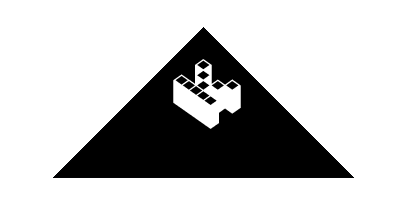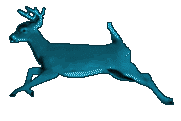Felicity Colman: Deleuze and Cinema: The Film Concepts (2011)
Filed under book | Tags: · cinema, film, film theory, image, montage, movement, perception, philosophy, semiotics, time

“Gilles Deleuze published two radical books on film: Cinema 1: The Movement-Image and Cinema 2: The Time-Image. Engaging with a wide range of film styles, histories and theories, Deleuze’s writings treat film as a new form of philosophy. This ciné-philosophy offers a startling new way of understanding the complexities of the moving image, its technical concerns and constraints as well as its psychological and political outcomes.
Deleuze and Cinema presents a step-by-step guide to the key concepts behind Deleuze’s revolutionary theory of the cinema. Exploring ideas through key directors and genres, Deleuze’s method is illustrated with examples drawn from American, British, continental European, Russian and Asian cinema.
Deleuze and Cinema provides the first introductory guide to Deleuze’s radical methodology for screen analysis. It will be invaluable for students and teachers of Film, Media and Philosophy.”
Publisher Berg, 2011
ISBN 1847887708, 9781847887702
288 pages
Reviews: Kam Chui Ping (Film-Philosophy 2012), Dorothea Olkowski (Cultural Sociology 2012).
PDF
Academia.edu (from author, added on 2015-10-20)
LEF, 1-7 (1923-25), & Novyi LEF, 1-24 (1927-29) [Russian, English]
Filed under magazine | Tags: · 1920s, art, art criticism, art theory, avant-garde, constructivism, factography, film, film theory, futurism, left, literature, poetry, productivism, revolution, russia, soviet union

LEF (“ЛЕФ”) was the journal of the Left Front of the Arts (“Левый фронт искусств” – “Levy Front Iskusstv”), a widely ranging association of avant-garde writers, photographers, critics and designers in the Soviet Union. It had two runs, one from 1923 to 1925 as LEF, and later from 1927 to 1929 as Novyi LEF (‘New LEF’). The journal’s objective, as set out in one of its first issues, was to “re-examine the ideology and practices of so-called leftist art, and to abandon individualism to increase art’s value for developing communism.”
Although LEF was catholic in its choices of writers, it broadly reflected the concerns of the Productivist left-wing of Constructivism. The editors were Osip Brik and Vladimir Mayakovsky: fittingly, one a Russian Formalist critic and one a poet and designer who helped compose the 1912 manifesto of Russian Futurists entitled, “A Slap in the Face of Public Taste”. The covers were designed by Alexander Rodchenko, and featured photomontages early on, being followed by photographs in New LEF. Among the writings published in LEF for the first time were Mayakovsky’s long poem About This, and Sergei Eisenstein’s The Montage of Attractions, as well as more political and journalistic works like Isaac Babel’s Red Cavalry. The journal had funding from the state, and was discussed critically, but not unsympathetically by Leon Trotsky in Literature and Revolution (1924).
The later New LEF (“Новый ЛЕФ” – “Novyi Lef”), which was edited by Mayakovsky along with the playwright, screenplay writer and photographer Sergei Tretyakov, tried to popularise the idea of ‘Factography’: the idea that new technologies such as photography and film should be utilised by the working class for the production of ‘factographic’ works. In this it had a great deal of influence on theorists in the West, especially Walter Benjamin and Bertolt Brecht. Linked journals also appeared such as the Constructivist architectural journal SA (edited by Moisei Ginzburg and Alexander Vesnin) and Proletarskoe Foto, on photography. The New LEF closed in 1929 over a dispute over its direction between Mayakovsky and Tretyakov, and under pressure for its ‘Formalism’, which jarred with the incipient Socialist Realism. (from Wikipedia)
LEF, 1-7 (ZIP; updated on 2012-7-19)
Novyi LEF, 1-24 (ZIP; updated on 2012-7-19)
All issues in PDF (added on 2015-7-21)
All issues in HTML (added on 2015-8-11)
English translations of selected essays (trans., ed. & intro. Richard Sherwood (LEF) and Ben Brewster (Novy LEF), Screen 12(4), Winter 1971-72; added on 2015-7-21)
Tanja Vrvilo, Petar Milat (ed.): Visual Collegium Reader (2007) [Croatian/English]
Filed under book | Tags: · cinema, film, film theory, visual culture

Vizualni kolegij [Visual Collegium] has be initiated in 2004 with a purpose to open up new discursive domains within the field of visual studies in Croatia. Main activities are regular screenings in net.culture club MaMa in Zagreb, a continous multi-annual lecture-series and publication of theoretical texts.
With contributions by Alexander Horwath, Stephen Zepke, Cesare Casarino and Akira Mizuta-Lippit.
Published by Multimedia Institute, Zagreb; in collaboration with BLOK 2007
ISBN 9537372022
216 pages

